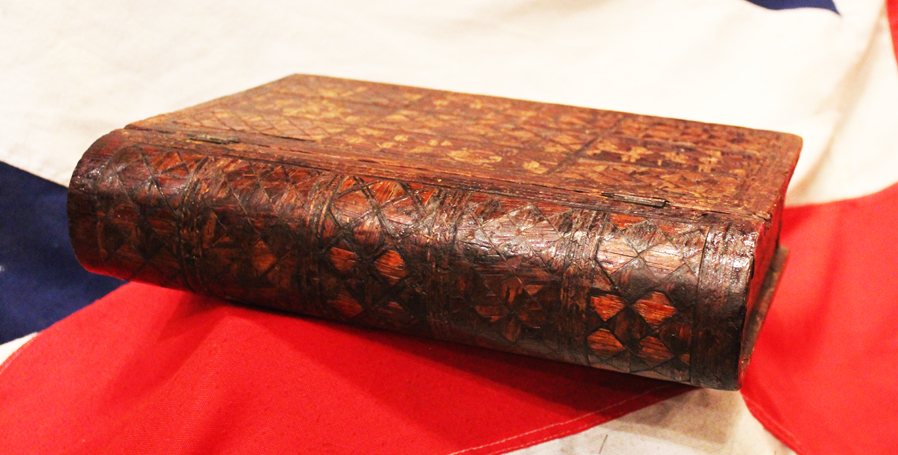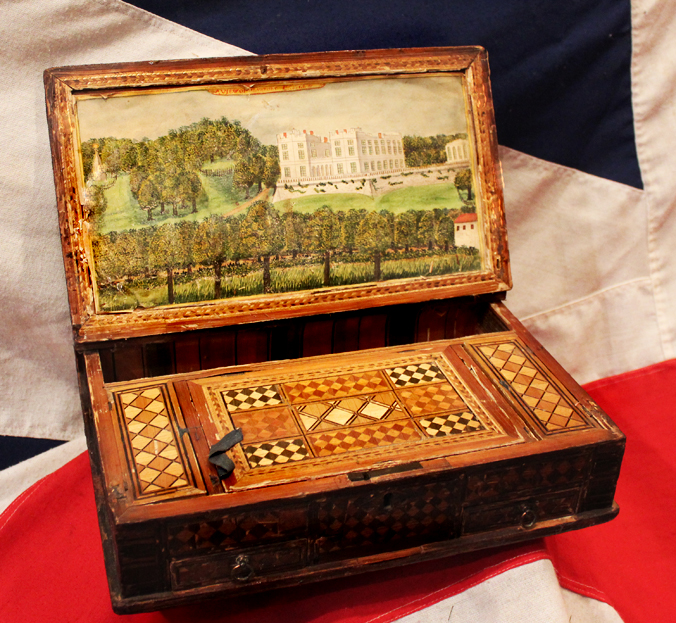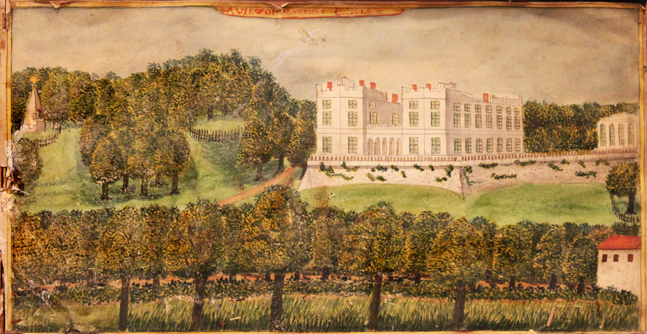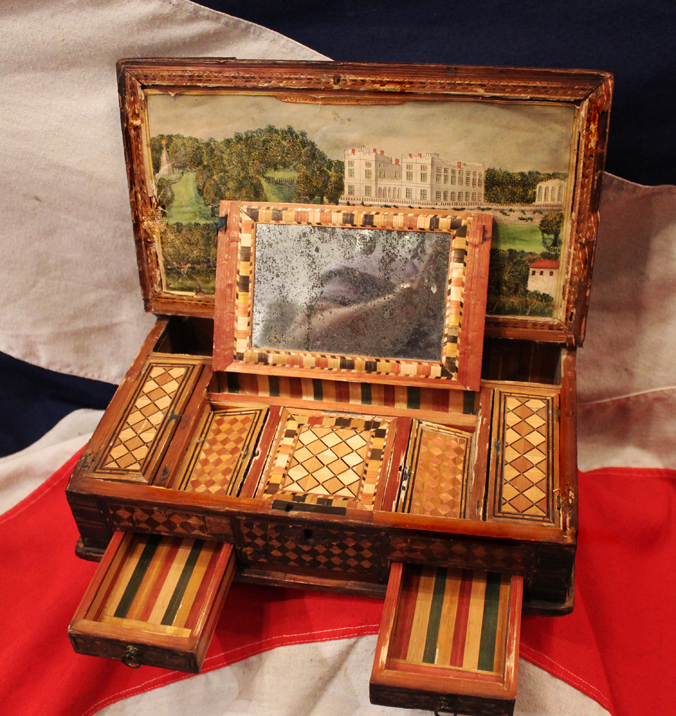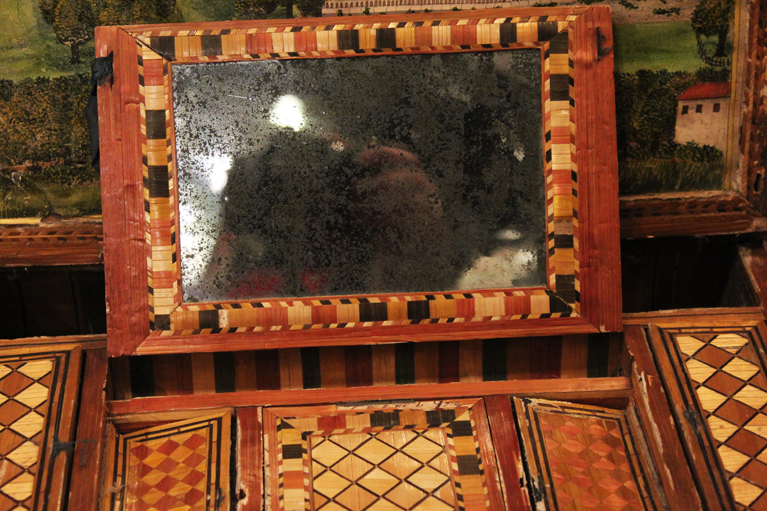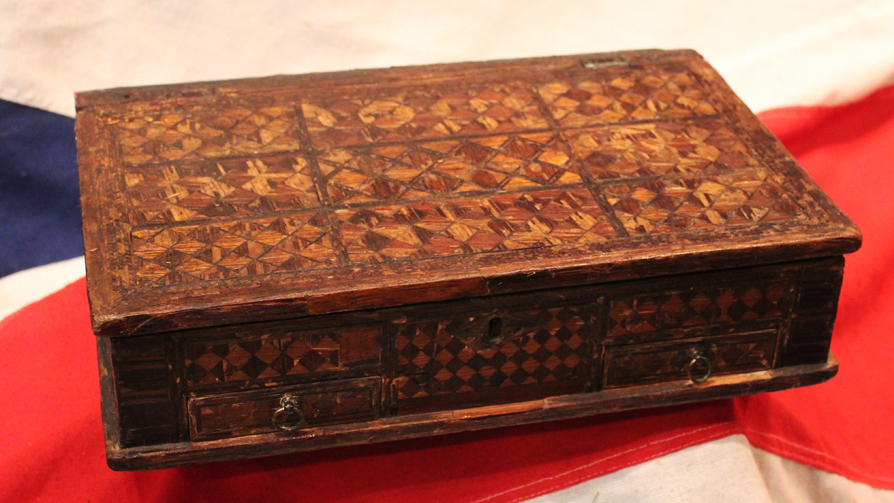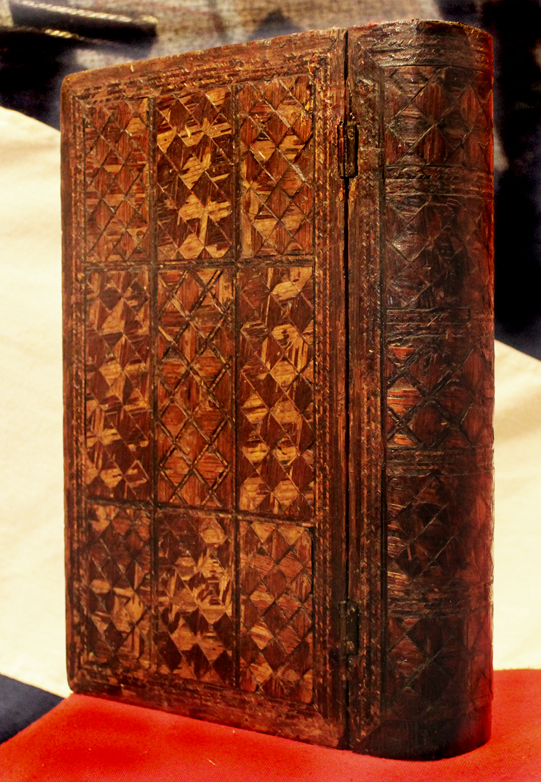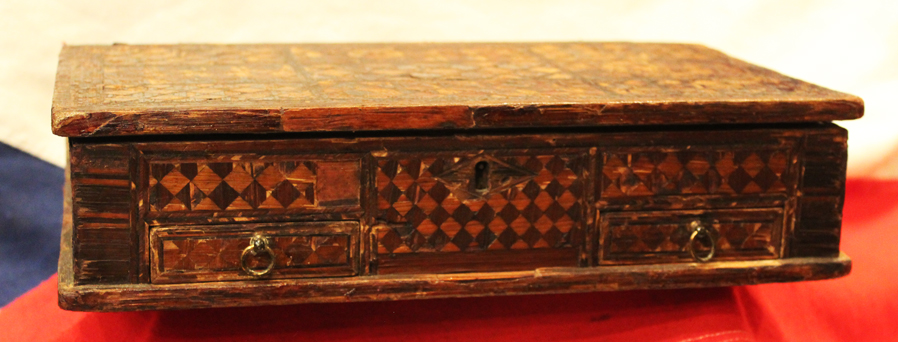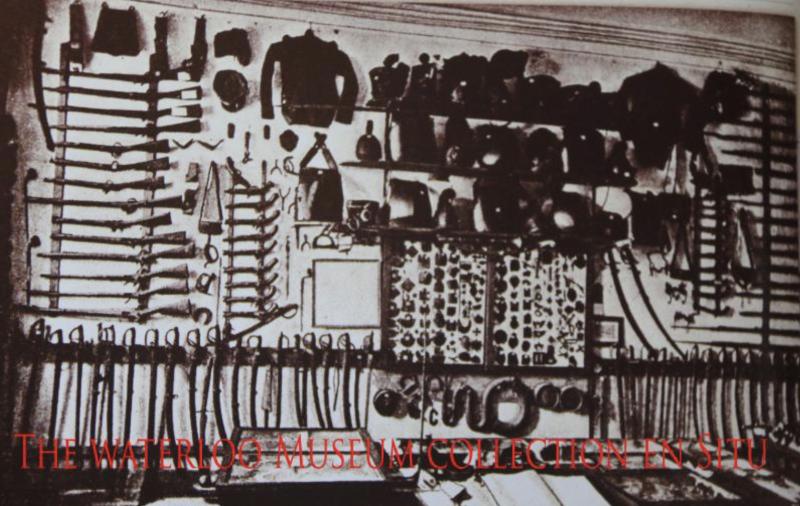A Superb, Original, Napoleonic French 'Prisoner-of-War' Travelling Dressing Case. A Unique Object D’art Created By A French Napoleonic War Combatant P.O.W Held in British Captivity. Sold To British Visitors To The Prisoner’s Markets
In wood covered in straw-work parquetry. A near identical example to one that is on display in the Burghley House Collection. Made by the captured Napoleonic and French wars French Prisoners-of-War in the early 1800's in order to subsidise their meagre prison rations, and this fine piece is made to give the impression it is a sizeable book when closed. The interior bears many small drawers and compartments and a fold away mirror in vauxhall plate, and a fine hand painted watercolour of Beaufort Castle in Invernesshire. All of the interior straw-work is pristine in colour and unfaded showing wonderful contrasts.
Great Britain was at war with France continuously from 1793 to 1802. Hostilities ceased briefly in 1802, but conflict soon recommenced. The Napoleonic Wars continued until 1815, when Napoleon?s forces were finally defeated at Waterloo.
In 1796 the first prison to house French prisoners was built at Norman Cross, some 5 miles north of Peterborough. Conditions must have been both harsh and crowded; disease killed more that 1,700 inmates between 1797 and 1814.
To supplement their rations and to provide small income, some prisoners made ornaments, models and toys, which they were allowed to sell. The materials used included straw, wood, bone and even human hair. Many of the items made were extraordinary in their complexity and design and were always very desirable to collectors. The proximity of Burghley House to the camp meant that members of the Cecil family acquired many fine examples.
Those displayed at Burghley include a number of containers made of wood with applied decoration of coloured straw, a stationery box, a set of bone spillikins in a pocket case, a framed straw-work picture of the house built for Napoleon Bonaparte on St Helena, to where he was exiled, a bone set of dominoes and playing cards and a detailed model of an 80-gun ship-of-the-line with hair rigging.
The last photo in the gallery shows a photograph of one section of the collection in the museum of Waterloo, taken in around 1900, showing all the weapons of Waterloo en situ, including all the protagonists {British, French, Prussian and Belgian muskets, swords, pistols, armour uniforms, etc}. The museum was founded and owned by a veteran of the 7th Hussars that fought at Waterloo
12.75 inches wide, x 9.25 inches x 3 inches.
Code: 20852
1295.00 GBP

